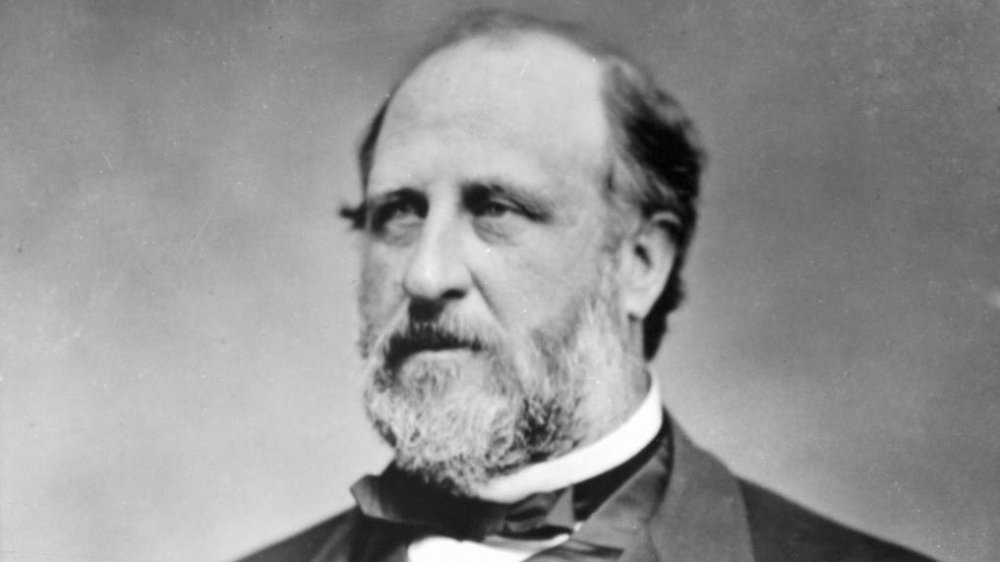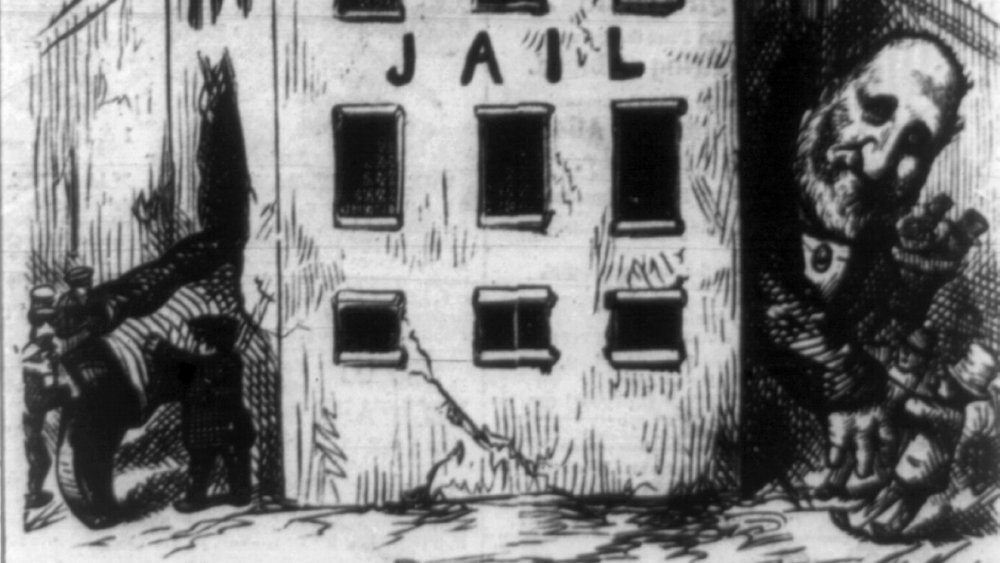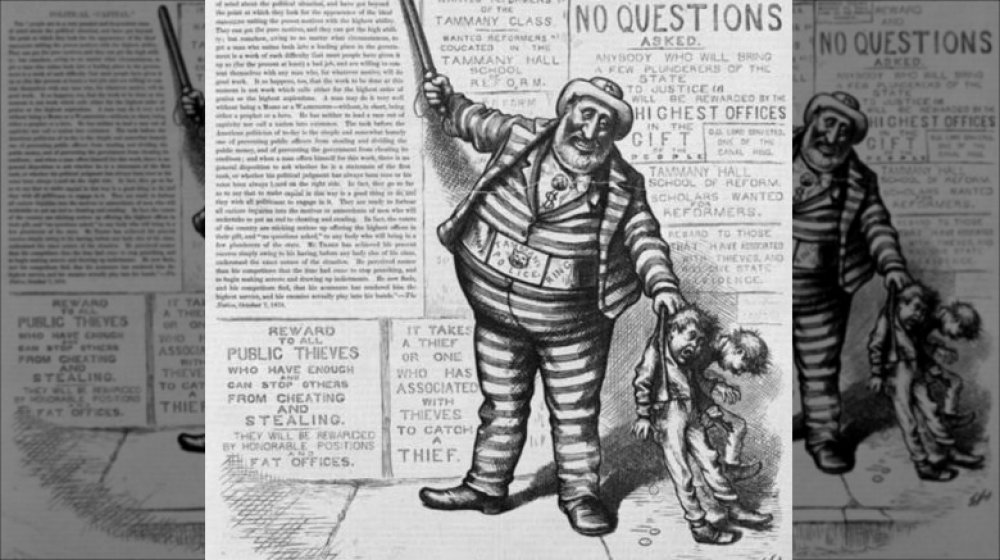The Crazy True Story Of Boss Tweed
William Magear Tweed's approach to electoral politics can be aptly captured in a single infamous quote: "I don't care who does the electing, so long as I get to do the nominating." During the 1860s, Tweed wore many political hats, via History, serving as a city supervisor and senator, among other things. However, he is best-remembered and worst-regarded as the self-serving boss of the obscenely corrupt Tammany Hall political machine that controlled New York's Democratic Party.
A man whose scruples ended where his body began, Tweed treated election fraud, bribery, embezzlement like job descriptions. He paid off officials and judges. As recounted in Boss Tweed: The Story of a Grim Generation, Tweed courted immigrants and turned the New York Supreme Court into a "naturalization mill." In a span of twenty days, he supposedly expanded the pool of eligible immigrant voters from a few hundred to almost 60,000. A corrupt man of the people, though, Tweed worked to improve the lives of his constituents, which really ought to be the bare minimum for politicians. He contributed to the construction of Central Park and the Brooklyn Bridge. At the same time, he also looted public funds, stealing up to $200 million (roughly $2.4 billion in modern terms).
Presumably, some of that money went to the 10-and-a-half carat diamond he wore on his shirt. Tipping scales at 300 pounds and tipping the scales of justice with a ton of influence, Boss Tweed was large, and in charge, and got criminally charged.
Too big for the big house
In 1872, Harper's Weekly published a political cartoon by Thomas Nast featured Tweed in a scene that redefined the term "jailbreak." A giant in the tiny confines of a city jail, he busted walls of a jail on opposite ends. Nast's caption reads in part: "'No Prison is big enough to hold the Boss. In on one side, and out at the other." A few years later, the real Tweed would prove him right in an even more cartoonish fashion.
According to the U.S. House of Representatives Office of the Historian, in 1874, Tweed was convicted of embezzlement and sentenced to a dozen years behind bars. For Tweed, life in the big house was really like living in a big house. He went to Blackwell Island prison, where he had a velvet sofa and library books, and a room with a view of Manhattan. Unsurprisingly, the prison had a relationship with Tweed's political machine that went way back. Per History of Tammany Hall, in the 1840s, the prison permitted prisoners to escape on the condition that they voted for pre-selected political candidates. Inmates whose terms had technically ended were kept behind bars anyway until election day. Tweed didn't have to worry about escaping, though, because his sentence was reduced from 12 years to just 1.
A vacationer from justice
After being released from Blackwell Island, Tweed was quickly re-incarcerated for civil crimes and then sent to Ludlow Street jail, where he stayed in a comfy two-bedroom apartment, per History. The warden sometimes permitted him to go on walks and carriage rides in Central Park. In 1875, he broke out in earnest, absconding to Cuba and sailing to Spain. He eluded justice for 11 months, but jail had been much cushier. The fleeing Tweed constantly battled seasickness and shed 100 pounds. His hair turned white.
In the end, Spanish law enforcement reportedly recognized Tweed from his depiction in the aforementioned Thomas Nast cartoon. He was recaptured and returned to the U.S., where he died behind bars in 1878. Of course, he might have considered his time as a fugitive more of a vacation than a jailbreak. He would say of his outing, "I did not escape from the jail but left my own house." Spoken like a true boss.


